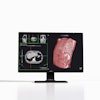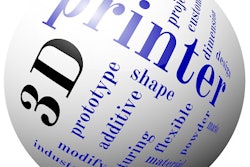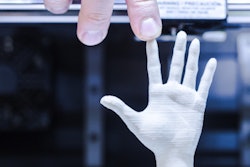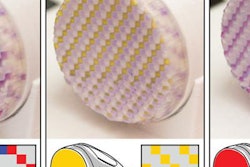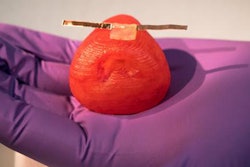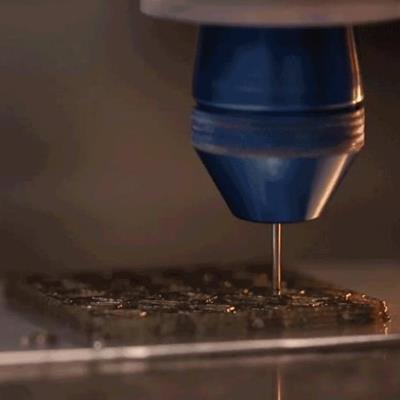
Researchers from Harvard have developed a 3D printing method that allows them to control the placement of small fibers extruding from 3D printer nozzles, thus optimizing their arrangement. The research was published online January 15 in the Proceedings of the National Academy of Sciences.
Referred to as "rotational 3D printing," the technique involves situating composite epoxy materials in specific locations using a 3D printer nozzle -- a process that maximizes the strength and stiffness of 3D-printed structures. The rotational 3D printing device is equipped with a stepper motor that guides the angular velocity of the nozzle as it rotates and emits inks.
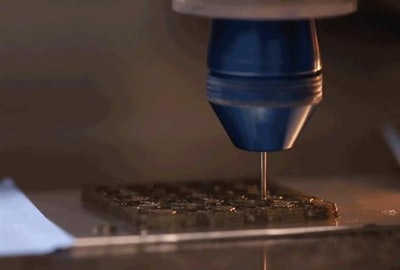 Rotational 3D printer nozzle equipped with a stepper motor. Image courtesy of Brett Compton, PhD, from the University of Tennessee.
Rotational 3D printer nozzle equipped with a stepper motor. Image courtesy of Brett Compton, PhD, from the University of Tennessee.Being able to manage fiber orientation locally enables the creation of complex microstructures with ideal patterning for distinct regions, according to the authors. For example, users could organize the fibers to increase damage tolerance in areas expected to face the highest amount of stress.
What's more, this concept theoretically applies to any form of material extrusion printing using any type of filler material, the researchers said.


